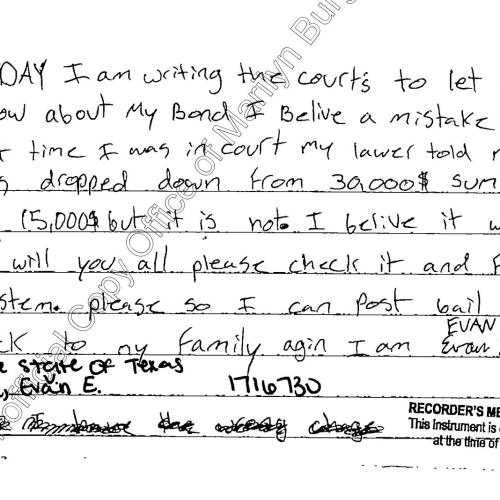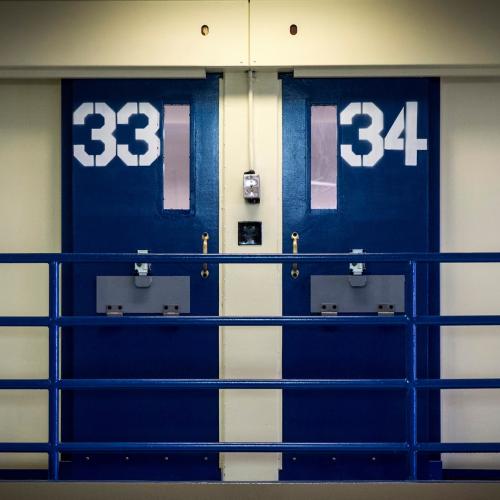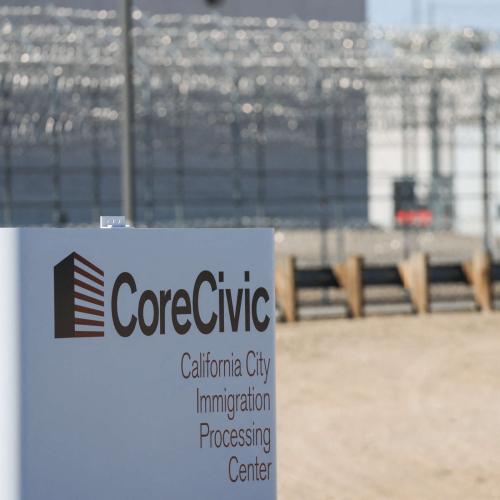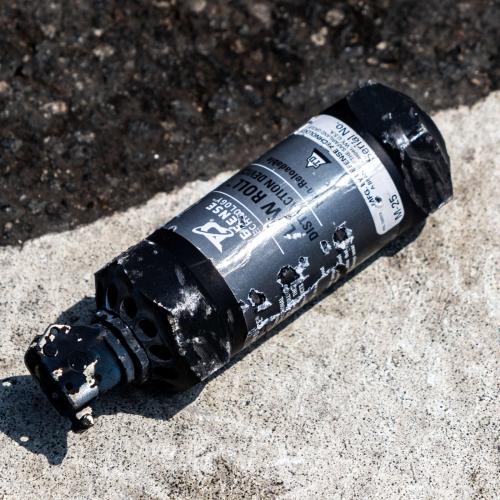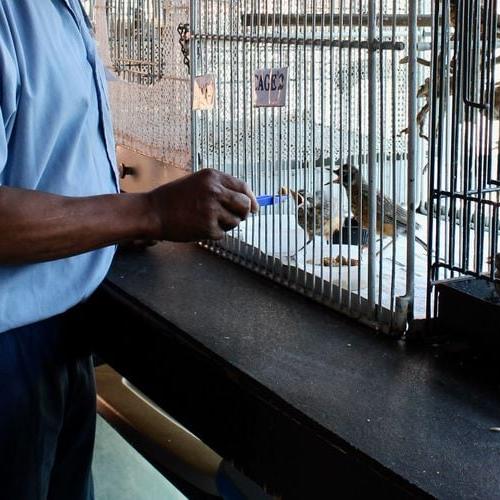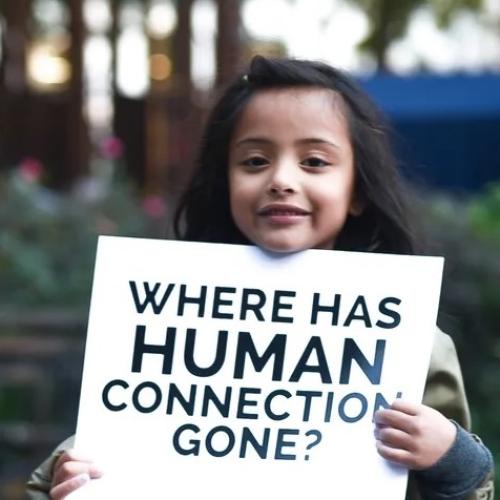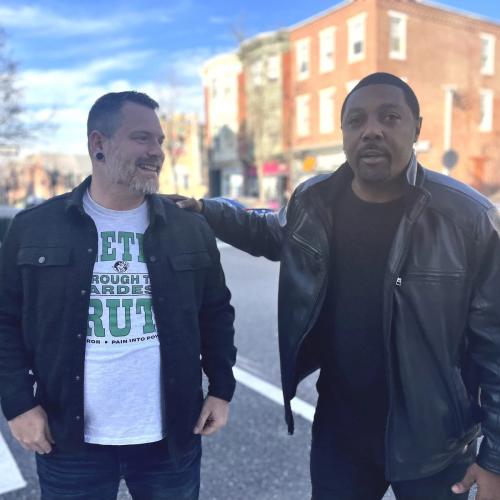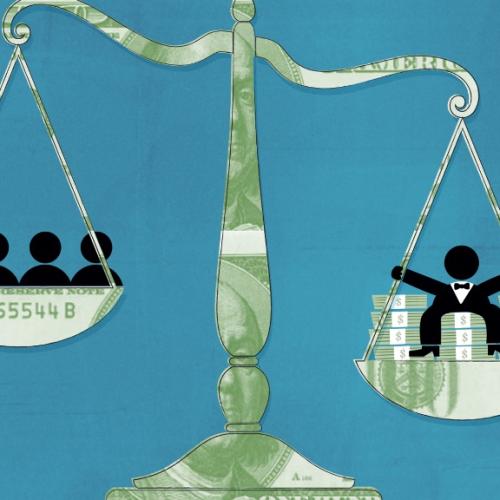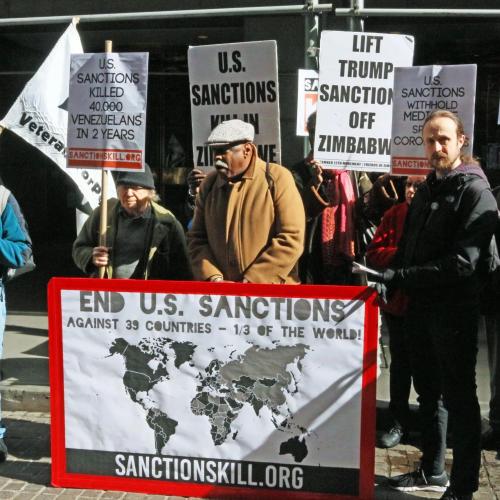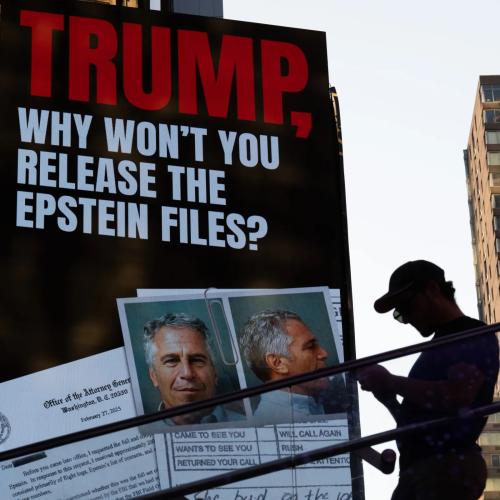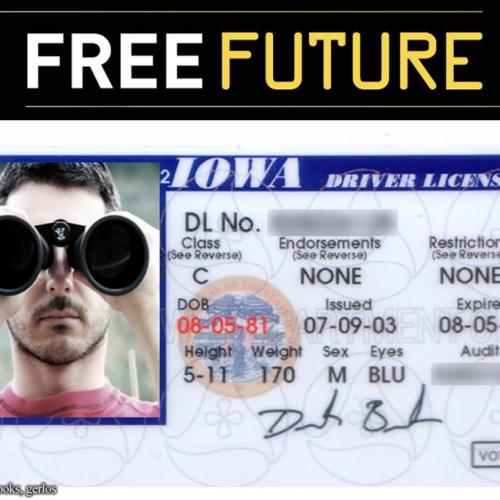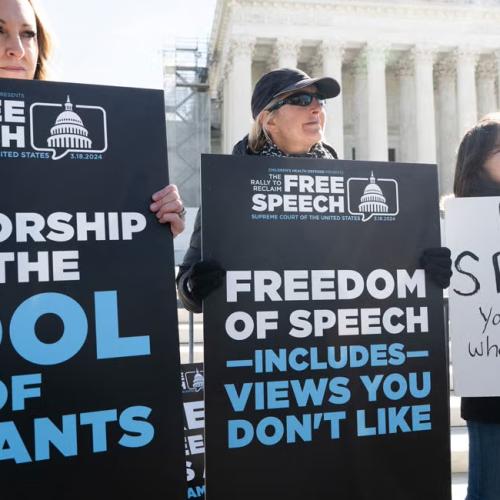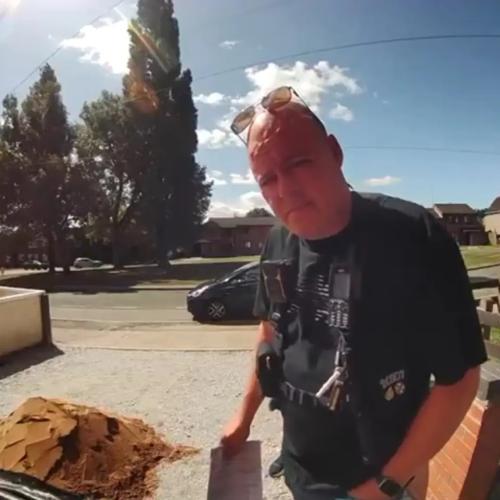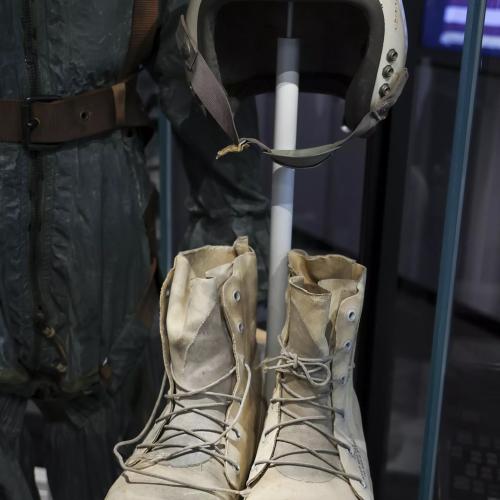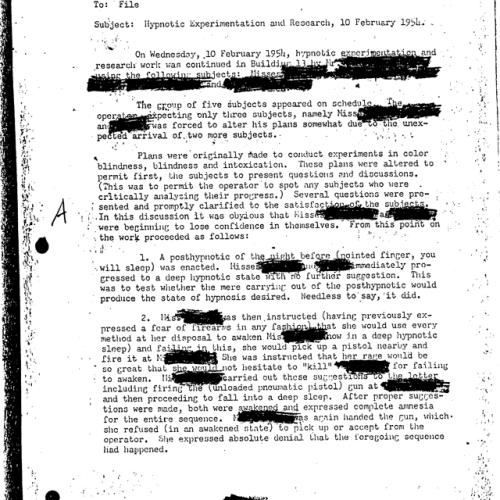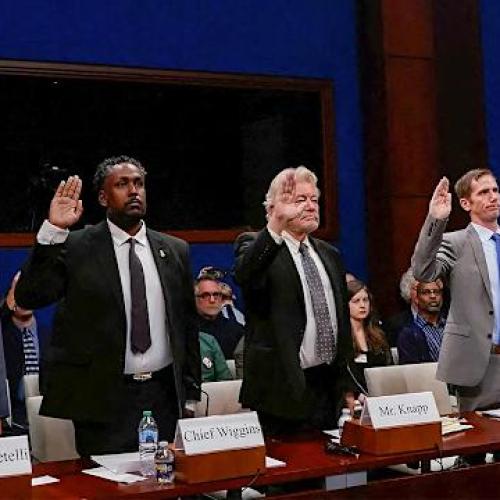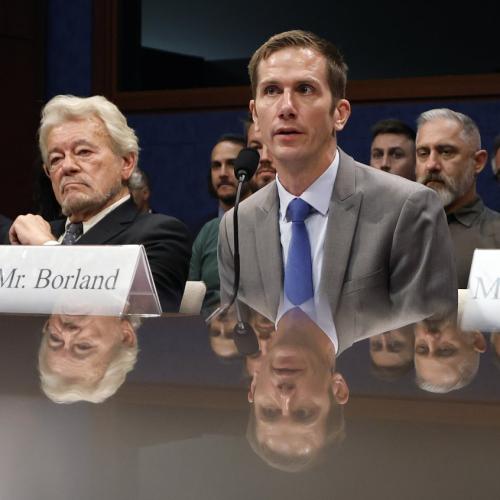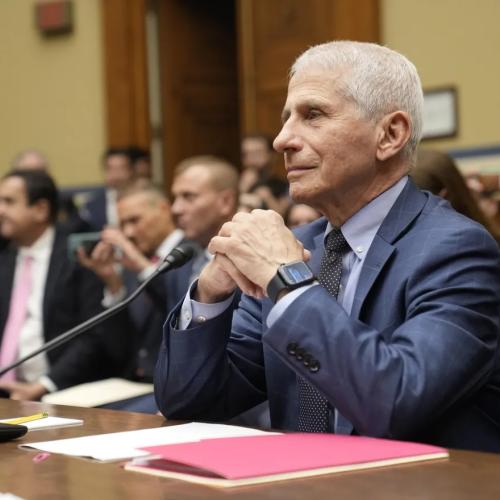Court and Judicial Corruption News Articles
Below are key excerpts of revealing news articles on Court and Judicial Corruption from reliable news media sources. If any link fails to function, a paywall blocks full access, or the article is no longer available, try these digital tools.
A man whose bid to become a police officer was rejected after he scored too high on an intelligence test has lost an appeal in his federal lawsuit against the city. The 2nd U.S. Circuit Court of Appeals in New York upheld a lower courts decision that the city did not discriminate against Robert Jordan because the same standards were applied to everyone who took the test. This kind of puts an official face on discrimination in America against people of a certain class, Jordan said today from his Waterford home. I maintain you have no more control over your basic intelligence than your eye color or your gender or anything else. Jordan, a 49-year-old college graduate, took the exam in 1996 and scored 33 points, the equivalent of an IQ of 125. But New London police interviewed only candidates who scored 20 to 27, on the theory that those who scored too high could get bored with police work and leave soon after undergoing costly training. The average score nationally for police officers is 21 to 22, the equivalent of an IQ of 104, or just a little above average. Jordan alleged his rejection from the police force was discrimination. He sued the city, saying his civil rights were violated because he was denied equal protection under the law. But the U.S. District Court found that New London had shown a rational basis for the policy. In a ruling dated Aug. 23, the 2nd Circuit agreed. The court said the policy might be unwise but was a rational way to reduce job turnover. Jordan has worked as a prison guard since he took the test.
Our Attorney General submitted a proposal last week that would dramatically erode our civil liberties. Among other things, the proposal suspends habeas corpus ... or the right to appear before a judge before being detained. That right is enshrined in our Constitution and without it, Barr could hold Americans indefinitely without a trial. Our justice system is grounded in an unwavering guarantee that each one of us is entitled to certain inalienable rights, including the right to due process before one's freedom is taken away. On March 13, the President declared a national emergency, which unlocked special powers to keep our country safe. Congress has enacted roughly 120 laws that allow presidents such powers to meet precisely these types of threats while maintaining our democracy. These laws are not without limits. Nor were they meant to be used to capitalize on fear to unnecessarily erode our freedoms. Yet while the world is consumed by this pandemic and when he thought no one was watching, Attorney General William Barr proposed granting himself immense, permanent powers extending far past the needs posed by this threat. For example, the proposal grants Barr personally the power to ask any chief judge to hold a citizen, "whenever the district court is fully or partially closed by virtue of any natural disaster, civil disobedience, or other emergency situation." If this were about COVID-19, the proposal would suspend only certain rights narrowly tailored to fighting this disease.
Note: This New York Times article details how autocrats around the world are using the fear generated to grab power. Read another highly informative article on how this crisis is being exploited to grab power. For more along these lines, see concise summaries of deeply revealing news articles on the coronavirus pandemic and the erosion of civil liberties from reliable major media sources.
New York City is an expensive place to live for just about everyone, including prisoners. The city paid $167,731 to feed, house and guard each inmate last year, according to a study the Independent Budget Office released this week. It is troubling in both human terms and financial terms, Doug Turetsky, the chief of staff for the budget office, said on Friday. With 12,287 inmates shuffling through city jails last year, he said, it is a significant cost to the city. by nearly any measure, New York City spends more than every other state or city. The Vera Institute of Justice released a study in 2012 that found the aggregate cost of prisons in 2010 in the 40 states that participated was $39 billion. The annual average taxpayer cost in these states was $31,286 per inmate. New York State was the most expensive, with an average cost of $60,000 per prison inmate. The cost of incarcerating people in New York Citys jails is nearly three times as much. 83 percent of the expense per prisoner came from wages, benefits for staff and pension costs. Some 76 percent of the inmates in the city were waiting for their cases to be disposed. The wait times have grown even as the number of felonies committed in the city has declined. Since 2002, the time spent waiting for cases to be disposed of has gone to 95 days, from 76 days, [former city correction and probation commissioner Michael] Jacobson said.
Note: This CNN chart shows that most states spend two to three times as much on their prison inmates than they do on students in school. What does that say about our priorities? For more along these lines, see concise summaries of deeply revealing prison system corruption news articles from reliable major media sources.
Police are violating no clearly established rights when they steal someones property after seizing it with a legal search warrant and, therefore, cant be sued in federal court, an appeals court ruled Wednesday. The Ninth U.S. Circuit Court of Appeals in San Francisco refused to reinstate a suit against Fresno police by two people whose homes and business were searched in 2013 during a gambling investigation. After the search, three officers signed an inventory sheet saying they had seized about $50,000. But the two owners, Micah Jessop and Brittan Ashjian, who operated automatic teller machines ... said the officers had actually taken $276,000 - $151,000 in cash and $125,000 in rare coins - and pocketed the difference. Darrell York, Jessops and Ashjians attorney, said police and a city attorney denied that a theft occurred. Even if Kumagai and his fellow officers stole money and coins from Jessop and Ashjian, the appeals court said, the owners could not sue in federal court to get their money back. Such a suit would require proof that their constitutional rights were violated, the court said, and suits against police must clear the additional hurdle of showing that those rights were clearly established. The allegation of any theft by police officers - most certainly the theft of over $225,000 - is undoubtedly deeply disturbing, Judge Milan Smith said in the 3-0 ruling. Whether that conduct violates the Fourth Amendments prohibition on unreasonable searches and seizures, however, is not obvious.
Note: Read about "civil asset forfeiture" used by police to steal money and other private property for their departments. For more along these lines, see concise summaries of deeply revealing police corruption news articles from reliable major media sources.
Florida prosecutors heard graphic testimony about how the late millionaire and financier Jeffrey Epstein sexually assaulted teenage girls two years before they cut a plea deal, according to transcripts released Monday of the 2006 grand jury investigation. Epstein’s ties to the rich and the powerful seems to have allowed him to continue to rape and sex traffic teenagers. Transcripts show that the grand jury heard testimony that Epstein, who was then in his 40s, had raped teenage girls as young as 14 at his Palm Beach mansion. The teenagers testified and told detectives they were also paid to find him more girls. After the grand jury investigation, Epstein cut a deal with South Florida federal prosecutors in 2008 that allowed him to escape more severe federal charges and instead plead guilty to state charges of procuring a person under 18 for prostitution and solicitation of prostitution. He was sentenced to one and a half years in the Palm Beach County jail system, followed by a year of house arrest. He was required to register as a sex offender. According to the transcripts, Palm Beach Police Det. Joe Recarey testified in July 2006 that the initial investigation began when a woman reported in March 2005 that her stepdaughter who was in high school at the time said she received $300 in exchange for “sexual activity with a man in Palm Beach,” Recarey testified. Another teenager ... told detectives that she was 17 years old when she was approached by a friend who said she could make $200 by providing a massage at Epstein’s home. Epstein told her that he would pay her if she brought other “girls” to his home. “And he told her, ‘The younger, the better,’” Recarey said.
Note: For more along these lines, see concise summaries of deeply revealing news articles on Jeffrey Epstein's child sex ring from reliable major media sources.
People injured by the COVID-19 vaccines are suing the federal government, claiming the federal program they're forced to pursue compensation through is an opaque and unconstitutional "kangaroo court" that unjustly rejects almost all claims it receives. React19, a patient group of the vaccine injured ... is one of several plaintiffs challenging the constitutionality of the Countermeasures Injury Compensation Program (CICP). The other plaintiffs are all individuals whose compensation claims were rejected by the CICP, despite many having diagnoses from their doctors that the severe injuries they experienced within a few hours or days of receiving a COVID-19 vaccine were a result of the vaccine. Their lawsuit was filed in October. The CICP is currently the only avenue through which those with a COVID-19 vaccine injury can seek compensation. A mix of federal law and pandemic-era emergency declarations bar the vaccine injured from suing vaccine manufacturers in civil court. Those with a COVID-19 vaccine injury are also prohibited from pursuing compensation through the standard Vaccine Injury Compensation Program (VICP). People must file a CICP claim within one year of vaccination. "Most of us don't know what's wrong with us for over a year if we can ever get a diagnosis," says [legal affairs director for React19 Christopher] Dreisbach, who himself suffered a COVID-19 vaccine injury. "So many ... don't even know the program even exists." The CICP was first authorized in 2005 by a piece of war-on-terror legislation intended to encourage companies to produce emergency countermeasures to a bioweapons attack or a similar disaster by shielding them from lawsuits.
Note: For more along these lines, see concise summaries of deeply revealing news articles on government corruption and COVID vaccines from reliable major media sources.
California law enforcement pursued criminal charges against eight anti-fascist activists who were stabbed or beaten at a neo-Nazi rally while failing to prosecute anyone for the knife attacks against them. In addition to the decision not to charge white supremacists or others for stabbings at a far-right rally that left people with critical wounds, police also investigated 100 anti-fascist counter-protesters, recommending more than 500 total criminal charges against them, according to court filings. Meanwhile, for men investigated on the neo-Nazi side of a June 2016 brawl ... police recommended only five mostly minor charges. The documents have raised fresh questions about California police agencies handling of rightwing violence and extremism, renewing accusations that law enforcement officials have shielded neo-Nazis from prosecution while aggressively pursuing demonstrators with leftwing and anti-racist political views. The Guardian previously interviewed two victims who were injured, then pursued by police Cedric OBannon, a black journalist and stabbing victim who ultimately was not charged, and Yvette Felarca, a well-known Berkeley activist whose case is moving forward. Previous records also revealed that police had worked with the neo-Nazi groups to target the anti-racist activists. The records disclosed this week provided new details about six other stabbing and beating victims who were treated as suspects by police after the rally ... which was organized by a neo-Nazi group.
Note: For more along these lines, see concise summaries of deeply revealing news articles on police corruption and the erosion of civil liberties.
On Tuesday, the supreme court issued an order requiring the Biden administration to reinstate the Trump-era policy that required asylum seekers from Central America to stay across the border in Mexico while their claims are adjudicated. On Thursday, the court blocked an extension of the federal emergency ban on evictions, gutting a 1944 law that gave the CDC the authority to implement such measures to curb disease, and endangering the 8m American households that are behind on rent – who now, without federal eviction protection, may face homelessness. Both of these orders last week were issued in the dead of night. Their opinions were truncated, light on the details of their legal reasoning, and unsigned. Vote counts were not issued showing how each justice decided. And despite the enormous legal and human impact that the decisions inflicted, they were the product of rushed, abbreviated proceedings. The court did not receive full briefs on these matters, heard no oral arguments and overrode the normal sequence of appellate proceedings to issue their orders. Welcome to the “shadow docket”, the so-called emergency proceedings that now constitute the majority of the supreme court’s business. Minimally argued, rarely justified and decided without transparency, shadow docket orders were once a tool the court used to dispense with unremarkable and legally unambiguous matters. The shadow docket’s expanded use raises troubling questions – both for transparency, and for the separation of powers.
Note: For more along these lines, see concise summaries of deeply revealing news articles on court system corruption from reliable major media sources.
Last Wednesday, The Miami Herald published a blockbuster multipart expos about how the justice system failed the victims of Jeffrey Epstein, a rich, politically connected financier who appears to have abused underage girls on a near-industrial scale. The investigation, more than a year in the making, described Epstein as running a sort of child molestation pyramid scheme, in which girls some in middle school would be recruited to give Epstein massages ... pressured into sex acts, then coerced into bringing him yet more girls. Whats shocking is ... the way he was able to use his money to escape serious consequences, thanks in part to [Alexander] Acosta, then Miamis top federal prosecutor. Acosta took extraordinary measures to let Epstein and, crucially, other unnamed people off the hook. The labor secretary, whose purview includes combating human trafficking, has done nothing so far to rebut The Heralds reporting. In 2007, Epstein was facing a federal indictment that could have put him away for the rest of his life. In a deal with one of Epsteins attorneys, however, Acosta, a rising star in Republican circles, [let] Epstein plead guilty to two felony prostitution charges in state court. Not only would Epstein serve just 13 months in the county jail, but the deal ... essentially shut down an ongoing F.B.I. probe into whether there were more victims and other powerful people who took part in Epsteins sex crimes. It was ... one of the most lenient deals for a serial child sex offender in history.
Note: Read a great interview with Julie Brown, the intrepid reporter who broke the Epstein case. For more along these lines, see concise summaries of deeply revealing news articles on Jeffrey Epstein from reliable major media sources. Watch an excellent segment by Australia's "60-Minutes" team "Spies, Lords and Predators" on a pedophile ring in the UK which leads directly to the highest levels of government. A second suppressed documentary, "Conspiracy of Silence," goes even deeper into this topic in the US.
When lawyers were preparing to defend against a lawsuit over a death in police custody in Fresno, Calif., they knew whom to call. Dr. Gary Vilke has established himself as a leading expert witness by repeatedly asserting that police techniques such as facedown restraints, stun gun shocks and some neck holds did not kill people. Officers in Fresno had handcuffed 41-year-old Joseph Perez and, holding him facedown on the ground, put a spinal board from an ambulance on his back as he cried out for help. The county medical examiner ruled his death, in May 2017, a homicide by asphyxiation. Dr. Vilke, who was hired by the ambulance provider, charged $500 an hour and provided a different determination. He wrote in a report ... that Mr. Perez had died from methamphetamine use, heart disease and the exertion of his struggle against the restraints. Dr. Vilke ... is an integral part of a small but influential cadre of scientists, lawyers, physicians and other police experts whose research and testimony is almost always used to absolve officers of blame for deaths, according to a review of hundreds of research papers and more than 25,000 pages of court documents, as well as interviews with nearly three dozen people. Their views infuriate many prosecutors, plaintiff lawyers, medical experts and relatives of the dead, who accuse them of slanting science, ignoring inconvenient facts and dangerously emboldening police officers to act aggressively. Many of the experts also have ties to Axon, maker of the Taser.
Note: For more along these lines, see concise summaries of deeply revealing news articles on police corruption from reliable major media sources.
Harvey Hill wouldn’t leave John Finnegan’s front yard. He stood in the pouring rain, laughing at the sky, alarming his former boss’ wife. Finnegan dialed 911. “He needs a mental evaluation,” the landscaper recalls telling the arriving officer. Instead, Hill was charged with trespassing and jailed. At the Madison County Detention Center ... guards tackled the 36-year-old, pepper sprayed him and kicked him repeatedly in the head. After handcuffing him, two guards slammed Hill into a concrete wall, previously unpublished jail surveillance video shows. They led him to a shower, away from the cameras, and beat him again, still handcuffed, a state investigation found. Video showed Hill writhing in pain in the infirmary, where he was assessed by a licensed practical nurse but not given medication. Hill was sent straight to an isolation cell. Within hours, he was dead. And he had a lot of company. Hill’s is one of 7,571 inmate deaths Reuters documented in an unprecedented examination of mortality in more than 500 U.S. jails from 2008 to 2019. Death rates have soared in those lockups, rising 35% over the decade ending last year. Casualties like Hill are typical: held on minor charges and dying without ever getting their day in court. At least two-thirds of the dead inmates identified by Reuters, 4,998 people, were never convicted of the charges on which they were being held. Reuters is making the full data it gathered available to the public here.
Note: For more along these lines, see concise summaries of deeply revealing news articles on prison system corruption from reliable major media sources.
An Arkansas judge who styled himself as a Sugar Daddy and was accused by local women of soliciting sex in exchange for cash, drugs and bail leniency largely escaped accountability from authorities for years, a Reuters investigation found. The judge was forced to resign from the bench in disgrace. But ... he continues to practice law despite his misconduct. As part of its Teflon Robe project, Reuters identified and reviewed 1,509 cases from the last dozen years 2008 through 2019 in which judges resigned, retired or were publicly disciplined following accusations of misconduct. In addition, the news agencys investigation identified 3,613 cases from 2008 through 2018 in which states disciplined judges privately withholding from the public details of their offenses, including the identities of the judges themselves. In many states, the lack of aggressive public oversight means that judges may behave with impunity. In the unlikely case that judges are publicly charged with misconduct, many states enable judges to simply resign or retire, putting a stop to the charges and any investigation of potential wrongdoing. Reuters found that at least 341 judges across the United States escaped punishment or further investigation in the past dozen years by resigning or retiring amid misconduct allegations. At least 5,206 people were directly affected by a judges misconduct. The victims ranged from people who were illegally jailed to those subjected to racist, sexist and other abusive comments from judges in ways that tainted the cases.
Note: Dont miss the entire Reuters series titled The Teflon Robe. For more along these lines, see concise summaries of deeply revealing news articles on judicial system corruption from reliable major media sources.
Judge Les Hayes once sentenced a single mother to 496 days behind bars for failing to pay traffic tickets. In 2016, the state agency that oversees judges charged Hayes with violating Alabamas code of judicial conduct. According to the Judicial Inquiry Commission, Hayes broke state and federal laws by jailing Johnson and hundreds of other Montgomery residents too poor to pay fines. Among those jailed: a plumber struggling to make rent, a mother who skipped meals to cover the medical bills of her disabled son, and a hotel housekeeper. Hayes, a judge since 2000, admitted in court documents to violating 10 different parts of the states judicial conduct code. One of the counts was a breach of a judges most essential duty: failing to respect and comply with the law. Despite the severity of the ruling, Hayes wasnt barred from serving as a judge. Hayes is among thousands of state and local judges across America who were allowed to keep positions of extraordinary power and prestige after violating judicial ethics rules or breaking laws they pledged to uphold, a Reuters investigation found. All told, 9 of every 10 judges were allowed to return to the bench after they were sanctioned for misconduct, Reuters determined. They included a California judge who had sex in his courthouse chambers ... a New York judge who berated domestic violence victims; and a Maryland judge who, after his arrest for driving drunk, was allowed to return to the bench provided he took a Breathalyzer test before each appearance.
Note: Dont miss the entire Reuters series titled The Teflon Robe. For more along these lines, see concise summaries of deeply revealing news articles on judicial system corruption from reliable major media sources.
Over the last few weeks, the Rodney Reed case has ignited a firestorm of interest, as celebrities, activists, and politicians worked to delay his Nov. 20 execution on the basis that he might be innocent. According to the National Registry of Exonerations (NRE), since 1989, 2,515 men and women have been exonerated after proving their innocence. In total, among all known exonerees, Americans have shelled out a staggering $4.12 billion to incarcerate innocent men and women since 1989. Thats largely money spent on trials, and the cost of housing inmates in prison. According to the Bureau of Prisons, in the fiscal year 2017, the average cost to house a prisoner was over $36,000 a year in federal facilities. But black men make up the majority of those wrongfully convicted approximately 49%. And since 1989, taxpayers have wasted $944 million to incarcerate black men and women that were later found to be innocent. That number climbs to $1.2 billion when including Hispanic men and women. On average, from the time a person enters the criminal justice system until they are exonerated, $1.26 million is spent per inmate who is facing the death penalty. The total sum $4.12 billion spent on all known exonerees also includes $2.2 billion that taxpayers have paid the innocent in compensation since 1989 for the time they were imprisoned, according to a 2018 NRE study. But while a large sum, only 44% of exonerees have ever received compensation.
Note: Read also how thousands have been sentenced to life in prison for non-violent crimes. For more along these lines, see concise summaries of deeply revealing news articles on prison system corruption from reliable major media sources.
In “Why the Innocent Plead Guilty and the Guilty Go Free: And Other Paradoxes of Our Broken Legal System,” [Judge Jed S.] Rakoff reaches far beyond corporate boardrooms to highlight an array of shortcomings within the criminal justice system. His proposed fixes are worthy of consideration but also lay bare a harsh reality: The entrenched interests tolerating the system’s inequities and, in some cases, profiting from the status quo pose significant obstacles to reform. Rakoff realized that America’s “system of justice is failing its mission” after becoming a federal district court judge a quarter-century ago. What’s the nature of this failure? The country imprisons millions of indigent Americans yet routinely allows white-collar criminals to avoid punishment. “To a federal judge,” he declares, the government’s reluctance to hold executives accountable and instead enter into “cosmetic prosecution agreements” with corporations that are repeatedly violated and unenforced “is disturbing ... in what it says about the DOJ’s apparent disregard for equality under the law.” Rakoff fittingly cites Pfizer to exemplify his point. The four deferred-prosecution agreements between the pharmaceutical giant and federal authorities from 2002 to 2009 — all devised to prevent future misconduct — failed to stop the company from flouting the law. Through it all, Pfizer’s executives went unpunished, and the fines the company paid represented a fraction of its ill-gotten gains.
Note: For a much deeper analysis and discussion of Judge Rakoff’s highly revealing book by courageous journalist Matt Taibbi, see this excellent essay. Consider subscribing to Taibbi’s excellent work. For more along these lines, see concise summaries of deeply revealing news articles on corruption in the court system and in Big Pharma from reliable major media sources.
Something happened in Baltimore last year. The coronavirus pandemic hit, and State’s Attorney Marilyn J. Mosby announced that the city would no longer prosecute drug possession, prostitution, trespassing and other minor charges, to keep people out of jail and limit the spread of the deadly virus. And then crime went down in Baltimore. A lot. While violent crime and homicides skyrocketed in most other big American cities last year, violent crime in Baltimore dropped 20 percent from last March to this month, property crime decreased 36 percent, and there were 13 fewer homicides compared with the previous year. This happened while 39 percent fewer people entered the city’s criminal justice system in the one-year period, and 20 percent fewer people landed in jail after Mosby’s office dismissed more than 1,400 pending cases and tossed out more than 1,400 warrants for nonviolent crimes. So on Friday, Mosby made her temporary steps permanent. She announced Baltimore City will continue to decline prosecution of all drug possession, prostitution, minor traffic and misdemeanor cases, and will partner with a local behavioral health service to aggressively reach out to drug users, sex workers and people in psychiatric crisis to direct them into treatment rather than the back of a patrol car. A number of big-city prosecutors have moved to decriminalize drugs, and Oregon voters decriminalized small amounts of drugs statewide.
Note: The fact that the rest of the US last year experienced a "Massive 1-Year Rise In Homicide Rates" makes this all the more impressive. A 2016 report by the Johns Hopkins-Lancet Commission on Public Health and International Drug Policy found that the the war on drugs harmed public health. When Portugal decriminalized drugs, its addiction rates were cut in half.
She was 30 years old, jobless and facing a custody fight. To keep her kids, she needed a lawyer. Tim Parker seemed ideal. The woman told authorities that she covered part of her legal fees by having sex with Parker, and that Parker paid her at least $3,000 for more sex over the next two years. But [Parker] wasn't just a lawyer. He was also a part-time judge. Although the woman declined to talk with Reuters, she alleged in secret testimony to the agency that Parker had also used his authority as a judge to help her friends bond out of jail, again in return for sex. The alleged conduct was not isolated. City police, the sheriffs office, the state police, the Federal Bureau of Investigation and a federal grand jury investigated Parker for about four years. Witnesses gave evidence that the judge disclosed the identity of a confidential informant; traded money and opioids for sex; and gave favorable treatment to young women in his courtroom, Reuters found. Despite the intense scrutiny, Parker, 58, was never charged with any crime. Still, Parkers term on the bench ended in disgrace, when the state judicial commission forced his removal and resignation on what was already scheduled to be his final day in office. The story of Tim Parker shows how hard it can be to remove an American judge suspected of corruption. In its investigation into judicial misconduct across America, Reuters ... found at least 5,206 people who were directly affected by a judges misconduct.
Note: Dont miss the entire Reuters series titled The Teflon Robe. For more along these lines, see concise summaries of deeply revealing news articles on judicial system corruption from reliable major media sources.
On Friday, the Biden administration unveiled final Title IX regulations, nearly two years after the administration proposed dramatic changes to how colleges handle sexual assault allegations. According to the final regulations, accused students will lose their right to a guaranteed live hearing with the opportunity to have a representative cross-examine their accuser. This is accompanied by a return to the "single-investigator model," which allows a single administrator to investigate and decide the outcome of a case. Further, under the new rules, most schools will be required to use the "preponderance of the evidence" standard, which directs administrators to find a student responsible if just 51 percent of the evidence points to their guilt. Schools are also no longer required to provide accused students with the full content of the evidence against them. Instead, universities are only bound to provide students with a description of the "relevant evidence," which may be provided "orally" rather than in writing. This is a stunning rollback of due process rights for accused students. Under the new regulations, a student can be found responsible for sexually assaulting a classmate because a single administrator believed there was a 51 percent chance he had committed the assault, and this conclusion can be reached without ever allowing the accused student to know the full evidence against him or providing a hearing during which he could defend himself.
Note: Sexual abuse is real and deeply important to address. Yet where is the due process in entrusting a single administrator working behind closed doors to decide the fate of accused individuals who aren't allowed to know the full evidence against them? Social justice activist adrienne maree brown has called attention to how abuse, harm, and conflict often get conflated, leading to damaging misinterpretations of behavior. Brown articulates: "We absolutely have a culture that affirms rape and abuse of power. But we also have a developing culture of moving to callouts and calling for cancellation very quickly." In a time where cancel culture has led to unprecedented in-house fighting and toxic public discourse, how do we honor context and healthy dialogue before accusing someone of sexual assault?
Crystal Mason, the woman who became the poster child for voter suppression when she was sentenced to five years for casting a ballot in Texas, has gone into federal prison. Masons crime was to cast a ballot in the 2016 presidential election. An African American woman, she had been encouraged by her mother to do her civic duty and vote. When she turned up to the polling station her name was not on the register, so she cast a provisional ballot that was never counted. She did not read the small print of the form that said that anyone who has been convicted of a felony as she had, having previously been convicted of tax fraud was prohibited from voting under Texas law. For casting a vote that was not counted, she will now serve 10 months in the federal system. While locked up it is likely that her final appeals in state court will be exhausted, which means she could be passed at the end of the 10 months directly to state custody for a further five years. Her lawyer, Alison Grinter, said she was dismayed to see Mason ripped from her family. This is an act of voter intimidation, not the will of a free people. Grinter added: Texas ... has one of the most strict voter ID laws in the country. Fort Worth ... has been particularly hardline, not only prosecuting Mason but also going after a Hispanic woman, Rosa Ortega, for mistakenly voting as a non-US citizen. Ortega, 37, who had permanent resident status in the US having come to the country as an infant, was sentenced to eight years in prison to be followed by deportation.
Note: For more along these lines, see concise summaries of deeply revealing news articles on corruption in elections and in the judicial system.
The Justice Department was caught in another high-profile travesty last month. On Dec. 20, federal judge Gloria Navarro declared a mistrial in the case against Nevada rancher Cliven Bundy and others after prosecutors were caught withholding massive amounts of evidence undermining federal charges. Bundy, a 71-year old Nevadan rancher, and his sons and supporters were involved in an armed standoff with the Bureau of Land Management (BLM) ... stemming from decades of unpaid cattle grazing fees and restrictions. The Bundys have long claimed the feds were on a vendetta against them, and 3,300 pages of documents the Justice Department wrongfully concealed from their lawyers provides smoking guns that buttress their case. A whistleblowing memo by BLM chief investigator Larry Wooten charges that BLM chose "the most intrusive, oppressive, large scale and militaristic trespass cattle (seizure) possible" against Bundy. The feds charged the Bundys with conspiracy in large part because the ranchers summoned militia to defend them after they claimed that FBI snipers had surrounded their ranch. Justice Department lawyers scoffed at this claim in prior trials ... but newly-released documents confirm that snipers were in place prior to the Bundys call for help. The feds also belatedly turned over multiple threat assessments which revealed that the Bundys were not violent or dangerous, including an FBI analysis that concluded that BLM was "trying to provoke a conflict" with the Bundys.
Note: For more along these lines, see concise summaries of deeply revealing news articles on corruption in government and in the judicial system.
Important Note: Explore our full index to revealing excerpts of key major media news articles on several dozen engaging topics. And don't miss amazing excerpts from 20 of the most revealing news articles ever published.





















